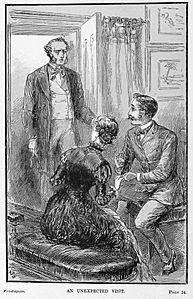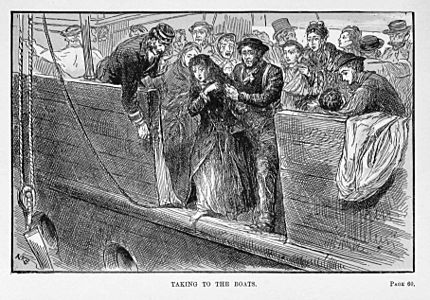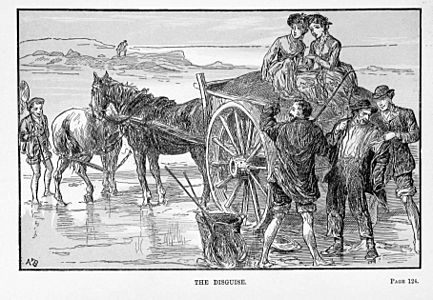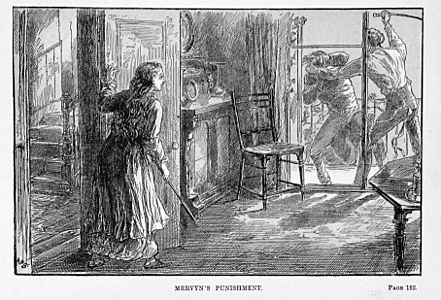Francesca Maria Steele facts for kids
Quick facts for kids
Francesca Maria Steele
|
|
|---|---|
| Born | 1848 |
| Died | 16 August 1931 (aged 82–83) |
| Nationality | English |
| Other names | Darley Dale, Fanny Maria Steels |
| Occupation | Novelist and biographer |
| Years active | 1878 – 1925 |
| Known for | Biographies of saints |
|
Notable work
|
The convents of Great Britain and Ireland |
Francesca Maria Steele (born in 1848, died in 1931) was an English writer. She wrote novels, history books, and biographies (life stories of people). She started writing to help her family financially. At first, she wrote books for young people. Later, she wrote stories for adults, using the pen name Darley Dale. She was a very religious person and became a Roman Catholic in 1887. After that, she wrote many books about religious topics.
Contents
Francesca Steele's Early Life
Francesca Maria Steele was born in 1848. Her father, Robert Peter Steele, worked as a secretary for an insurance company. Her mother was Frances Mary Francis.
Francesca went to Bedford College, London. This was the first college in the United Kingdom especially for women. From 1874 to 1884, she lived in Jersey, an island near England. She started her writing career there in 1878 with a book called The Jersey Boys.
In 1884, Francesca's father passed away. His pension (regular payment after retirement) stopped, and he had lost other money in a bank problem. This meant Francesca's mother needed her daughter's help. So, Francesca became the main earner for her family through her writing.
Francesca moved to Gloucestershire with her mother and sisters. Francesca and her sister Alice Mary became Roman Catholics in 1877. Alice later became a nun and worked at Tyburn Convent in London. Francesca continued to live in Gloucestershire until she passed away.
How Francesca Steele Used Different Names
Francesca Maria Steele was first registered and baptized as Fanny Maria Steele. She used this name for many years. Later, she started using the name Francesca Maria Steele. She used this name for her religious books, like The Convents of Great Britain (1902).
For all her fiction books (stories), she used the pen name Darley Dale. This was a common practice for writers at the time. She kept using Francesca Maria Steele for her religious writings.
Francesca Steele's Books and Writings
Francesca Steele wrote many different kinds of books. Her work can be put into three main groups:
- Books for Young People: These are called juvenile fiction. She wrote about 20 books for children. These books often had pictures and were printed in one volume.
- Novels for Adults: These are called adult fiction. She wrote more than a dozen adult novels. Many of her early adult novels were published in three parts. This was popular because libraries could lend out each part separately.
- Books on Religious Topics: These books were about saints and important people in church history. She also wrote surveys of convents and monasteries.
The information for the table below comes from different library databases and lists of authors. You might find some of these books online.
| No | Year | Title | Illustrator | Type | Publisher | Pages | Notes |
|---|---|---|---|---|---|---|---|
| 1 | 1878 | The Jersey Boys | juv. | RTS, London | |||
| 2 | 1879 | Helen Leslie; or, “A Little Leaven" | juv. | Frederick Warne & Co, London | 192 pages, (8º) | ||
| 3 | 1880 | A Tearful Victory. A story for children | juv. | SPCK, London | 128 pages, (8º) | ||
| 4 | 1881 | The black donkey; or, The Guernsey boys | juv. | SPCK, London | cm.16 | ||
| 5 | 1882 | Little Bricks | juv. | James Nisbet & Co, London | 231 pages, (8º) | ||
| 6 | 1882 | The Family Failing | juv. | Blackie & Son, London | 221 pages, (8º) | ||
| 7 | 1882 | Cissy's Troubles | juv. | James Nisbet & Co, London | 233 pages, (8º) | ||
| 8 | 1883 | Spoilt Guy | juv. | James Nisbet & Co, London | cm.18 | ||
| 9 | 1884 | Seven sons; or, The story of Malcolm and his brothers | juv. | James Nisbet & Co, London | cm.18 | ||
| 10 | 1885 | Fanny's king: and other stories | juv. | Blackie & Son, London | 64 p., [1] leaf of plates, ill., 15.2 cm. | ||
| 11 | 1885 | The wild marsh-marigolds | juv. | London | cm.15 | ||
| 12 | 1885 | The great auk's eggs | Charles Whymper | juv. | RTS, London | 158,[2]p., [1] leaf of plates, ill., 18 cm. | |
| 13 | 1886 | Oughts and Crosses: or, Mr. Holland's conquest | juv. | J. Nisbet & Co, London | 269 pages, (8º) | ||
| 14 | 1886 | Fair Katherine | adt. | Hurst & Blackett, London | 3 volumes, (8º) | ||
| 15 | 1886 | Swallow-tails and skippers | Lucy Francis | juv. | RTS, London | 158 p., 1 col. ill., 19 cm. | |
| 16 | 1887 | The glory of the sea | juv. | RTS, London | cm.18 | ||
| 17 | 1887 | The Shepherd's Fairy: a pastorale | juv. | RTS, London | 208 pages, (8º) | ||
| 18 | 1889 | Mr. Mygale's Hobby: a story about spiders | Charles Whymper | juv. | RTS, London | 192 pages, (8º) | |
| 19 | 1890 | Noah's ark: a tale of the Norfolk Broads | Paul Hardy | juv. | Frederick Warne and Co, London | 280, [8] p., ill., 20 cm. | |
| 20 | 1892 | The little doctor: or, The magic of nature | Alexander Monro | juv. | Wells Gardner, Darton & Co, London | 209, [7] p., ill., 20 cm. | |
| 21 | 1892 | The Village Blacksmith | adt. | Hutchinson & Co, London | 3 volumes, (8º) | ||
| 22 | 1893 | Lottie's wooing, by Darley Dale | adt. | Hutchinson & Co, London | 3 vols. cm.19 | ||
| 23 | 1894 | The Game of Life. A novel | adt. | Hutchinson & Co, London | 3 volumes, (8º) | ||
| 24 | 1896 | Willy's Flower. | juv. | Blackie & Son, London | 16 pages, (16º) | ||
| 25 | 1896 | A Modern Comedy of Errors | adt. | ||||
| 26 | 1897 | Stella's story: a Venetian tale | Paul Woodroffe | juv. | J. S. Virtue and Co, London | 248 p., 8 ill., 20 cm. | |
| 27 | 1897 | Chloe | adt. | Bliss, Sands & Co, London | 352 pages, (8º) | ||
| 28 | 1898 | Cupid's Crooked Ways | adt. | ||||
| 29 | 1899 | Justice Meadows: or the Golden Tree of Knowledge | adt. | ||||
| 30 | 1902 | The convents of Great Britain | rel. | Sands & Co, London | xxv, 320 pages, 25 leaves of plates, portraits (black and white), 19 cm | ||
| 31 | 1902 | The Daughters of Job | adt. | R. A. Everett & Co, London | 390 pages, (8º) | ||
| 32 | 1902 | Monasteries and Religious House of Great Britain and Ireland. With an appendix on the religious houses in America | rel. | R. & T. Washbourne, London | xv, 267 pages, (8º) | ||
| 33 | 1903 | The House that Jack built | adt. | R. A. Everett & Co, London | 313 pages, (8º) | ||
| 34 | 1903 | Anchoresses of the West | rel. | Sands & Co, London | xxii, 261 pages, (8º) | ||
| 35 | 1903 | The Flighty Duchess | adt. | ||||
| 36 | 1904 | Brother Francis. A novel | adt. | R. A. Everett & Co, London | 316 pages, (8º) | ||
| 37 | 1905 | The Mirror of St. Edmund. Done into modern English. | rel. | Burns & Oates, London | x, 80 pages, (16º) | ||
| 38 | 1907 | Naomi's transgression | adt. | Frederick Warne and Co, London | vi, 306, [6] p., [6] l. of plates, ill., 20 cm. | ||
| 39 | 1908 | The story of the English Pope | rel. | Macdonald and Evans, London | 177 p, col. ill, 17 cm. | ||
| 40 | 1909 | St. Bridget of Sweden | rel. | R. & T. Washbourne, London | xxviii, 140 p., frontis., 8º. | ||
| 41 | 1910 | The story of the Bridgettines | rel. | R. & T. Washbourne, London | 19 cm. | ||
| 42 | 1910 | The Beautiful Queen, Joanna I. of Naples | rel. | Hutchinson & Co, London | vii, 347 pages, (8º) | ||
| 43 | 1914 | The life and visions of St. Hildegarde | rel. | Heath Cranton, London | xiv, 246 p., frontis., 19 cm. | ||
| 44 | 1921 | The Life of Saint Walburga | rel. | Heath Cranton, London | 189 pages, (8º) | ||
| 45 | 1922 | Old Mrs. Graham | adt. | Hutchinson & Co, London | 286 p., 8º. | ||
| 46 | 1923 | The Master of the House | adt. | Heath Cranton, London | 290 p., C | ||
| 47 | 1925 | The convents of Great Britain and Ireland | rel. | London | 8º. | ||
| 48 | 1928 | The Little Widow, 2nd edition | adt. |
Illustrations in Her Books
Many of Francesca Steele's books for young people included illustrations. This was common for children's books at the time. The pictures below are examples from her book The Family Failing (1883), drawn by an artist known as AFB.
Francesca Steele's Later Years
In her later life, Francesca Steele lived with her sister Emma Caroline in Stroud, Gloucestershire. She continued to write, but her income was not always enough. She passed away on August 16, 1931, at the age of 83. Her sister Emma Caroline was her executor (the person who managed her estate). Emma Caroline died a few years later in 1935.





